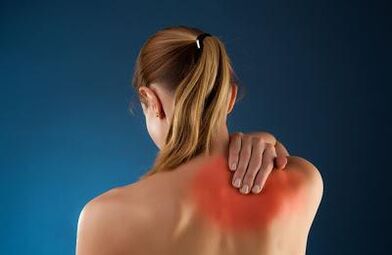
When the back hurts in the region of the scapula, the majority do not even react to such factors. Minor inconveniences pass, but over time one becomes so accustomed to such things that amplifying and supplementing the alarm signals does not require examination. Sometimes people don't even notice itthe disease poses a great health risk.
According to statistics, about 80% of people complain of failures in the spine, lower back, and neck.
About 60% are concerned about pain in or below the scapula. Such pathologies greatly complicate movement and limit performance. The causes of the sensations are skeletal muscle spasms, overload. A feeling of pressure in a certain area occurs when the diseased organs are located at this level.
The malaise can be localized:
- on both sides;
- below the left side;
- on the right side;
- middle;
- below;
- when coughing;
- on inhalation;
- when turning the head;
- from the side of the heart;
- the area of the back and sternum should be covered;
The causes are damage to internal organs, vertebrae, pathology of the nervous system, physical activity, injuries, chronic failures of the body, the musculoskeletal system.
Let's analyze each inconvenience in more detail.
Pain on both sides
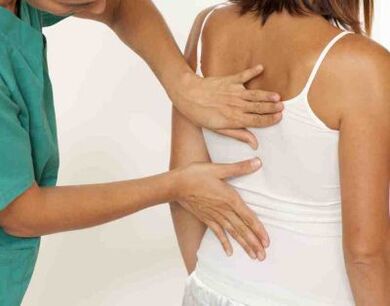
It can occur due to heavy physical exertion when the muscles and tendons are strained. An unsuccessful turn or movement also leads to a similar state. The symptoms will be swelling, redness of the focus. In a situation with characteristic crunching, the disease is called scapula crunching. The localization speaks of bursitis, inflammation of the internal organs, in only two places. Sometimes back pain in the area of the shoulder blades is a sign of tuberculosis or osteomyelitis, in which case the flat bones are painful and collapse during the development of an infection. The patient is febrile and febrile. Pneumonia and pleurisy cause pain to the touch, osteochondrosis spreads to both sides.
Pulmonary forms are characterized by wheezing, shortness of breath, and coughing.
character
From acute to moderate, with a burning sensation in case of trauma.
Treatment
After the diagnosis, the traumatologist selects the therapy according to the source of the disease. In the presence of injuries, bruises, bursitis, non-steroidal drugs are prescribed. The patient is recommended to limit physical activity. Add physiotherapy electrophoresis, magnet, ultrasound, massage. If the back hurts in the area of the shoulder blades as a result of tuberculosis, pneumonia, or a purulent infection, it is treated in a hospital with fluoroquinolone antibiotics and macrolides.
Pain in the left side

The result of the appearance of diseases can be ulcers of the gastrointestinal tract. In addition, a person suffers from nausea, vomiting and belching. Nervous. The vast majority of people suppress their emotions, experience restlessness and accumulated problems. They feel not only pain, but also heaviness in the sternum, a lump in the throat. A heart attack not only causes pain under the left shoulder blade, but also causes a burning sensation from the side of the arm, the neck region, and the jaw.
The provoking factors are cervical osteochondrosis, intercostal neuralgia, changes in the pulmonary system, oncology.
character
Strong. In the case of an ulcer, it is dull, aching, pressing on nervous tension, pulling on the chest. Heart attack - burning, giving under the bone. Neuralgia - strong, shooting, while the lower back is affected. In the presence of bacteriological process and oncology, constant, temperature, fever, chills join, appetite is suppressed.
Treatment
You should consult not only a therapist, but also a cardiologist, gastroenterologist, vertebrologist, and psychiatrist. Medicines are prescribed based on the provoking source. NSAIDs for dystrophy. Stomach ulcer includes antibiotics, anticholinergic drugs. Intercostal destruction of the peripheral endings can be cured with painkillers and non-steroidal anti-inflammatory drugs. Antiemetics and antacids are also prescribed. In some cases, perforation of the ulcer requires surgical intervention. Infections such as left sided pneumonia, osteomyelitis mean taking antibiotics.
Oncology is serious, long-term treatment with chemo procedures.

Pain on the right side
It develops due to muscle spasms of the gallbladder or bile ducts. It causes a stone condition that clogs the ducts, contributing to biliary and hepatic colic. The person feels chills and fever. Osteochondrosis is asymptomatic in the initial stage, the sensitivity threshold is low. A subdiaphragmatic abscess affects not only the right lobe, but also the shoulder. The patient suffers from fever and unbearable pain. Pyelonephritis, pancreatitis, adhesions after pneumonia on the right side, bruising of the suprascapular nerve, and myofascial syndrome are also causes of the disease. A diseased pancreas, tumors in the liver, kidneys put pressure on the corresponding zone.
Hepatic colic has no other sign than a painful malaise.
character
With blunt cholecystitis. Pancreatitis, pyelonephritis, is accompanied by a pulling, painful feeling with kickback in the lumbar region, in the upper body. Tumors of the organs are caused by periodic, pulling pains in the right lobe of the body. In case of burning symptoms, pinching of nerve roots is possible. Dystrophy of the neck compartment is recognized by the piercing of the lumbar region. If it is acute, an abscess forms under the diaphragm.
Treatment
The doctor prescribes NSAID drugs, their property is aimed at eliminating symptoms and reducing inflammation. Physiotherapy with laser, magnet, electrophoresis, manual therapy and gymnastics therapy gives good results. An abscess is treated with a group of substances that inhibit the growth of bacteria. Pancreatitis attacks require the use of antibiotics and enzymes. Pyelonephritis belongs to the group of penicillin drugs. Cholecystitis includes macrolides, pain relievers, choleretics.
All three processes indicate the observance of a special diet.
Between the shoulder blades
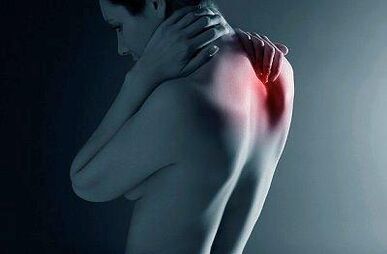
The main conditions that cause the disease include low activity, sedentary work, gravity, exercise. The main failures are osteochondrosis, scoliosis, kyphosis, spondylarthrosis, intervertebral disc herniation in the chest, cervical and thoracic sciatica, intercostal disc displacement and humeroscapular periarthrosis. The first disease develops due to dystrophic changes in bone tissues. Scoliosis as a result of a careless attitude to health. Incorrect sitting and standing leads to a change in position, the bone structures are pulled to the left and right, changing the posture. After that, it is painful for the patient to sit in an unusual position. Kyphosis occurs due to the extremely strong curvature of the spine, the round back syndrome appears. Spondyloarthrosis also refers to diseases that affect changes in bone structure. Hernia is dangerous because it can compress the spinal cord, nerve fibers are destroyed. This restricts the patient's movement. Sciatica provokes entrapment of nerve roots. The symptoms will be pain, swelling and redness, muscle spasms. Periarthrosis scapularis is a degeneration of the tissues surrounding the joint. It is expressed in puffiness, lying behind the back of the limb. The patient may have pain in the arm, neck, and interscapular area.
Other causes are ischemic heart disease, infection with pathogenic bacteria.
character
Strong, long-lasting, with a burning sensation in certain situations. Infections are caused by the presence of temperature.
Treatment
Osteochondrosis, sciatica and other pathologies of bone destruction can be treated with NSAIDs. Use of pain-relieving creams. Definitely chondroprotectors. Therapy with heat, magnet, electrophoresis. The patient is prescribed physical therapy and massage. In the initial stages, scoliosis is treated with exercise therapy and massage. In the case of a hernia, the treatment is conservative, excluding manual techniques and massage!
Antibiotics depending on the causative agent for infections, pneumonia, tuberculosis, poliomyelitis.
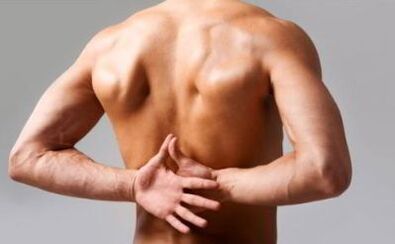
Under the shoulder blade
It provokes osteochondrosis. The diseased area hurts, there is back pain. Injuries, bruises, swelling, sensitivity to touch. The area is hot and inflamed. High performance and pregnancy are to blame for the pain in the spine and under the shoulder blades. Tuberculosis bacillus or tuberculosis is an abscess localized anywhere. It is characterized by fever, weakness, and poor appetite. Sciatica or inflammation of the nerve root also radiates to the leg. Bone growths resulting from spondylosis exert pressure on the area, causing discomfort to spread to the ribs, under the sternum and between the shoulder blades.
Constant pain under the shoulder blade can also be caused by a disease of the internal organs.
character
Moderate to severe, with twitching in the right or left leg when the nerves are pinched.
Treatment
Degeneration of cartilage, joints, and bone mass is associated with medical treatment using non-steroidal drugs. Physiotherapy courses, massage, magnetotherapy, ultrasound, laser, electrophoresis. Additional measures include proper nutrition and the seasonal intake of chondroprotectors. Injuries and bruises include painkillers and ointments that reduce hyperemia, which have absorbent properties. Treatment with physiotherapy, paraffin compresses, electrophoresis with potassium iodide, UHF. Cold compress at home.
Pain when coughing
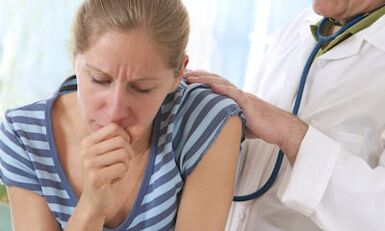
The presence of a warning sign indicates spinal pleurisy, chronic bronchitis, pneumonia, muscle strain, sciatica, osteochondrosis and even lung cancer. The discomfort extends to the area under the shoulder blades, the lower back, and the spinal apparatus.
You will have difficulty walking in the future.
character
Sharp, sharp, jagged. It increases in the evening.
Treatment
A patient diagnosed with pneumonia is taken to the hospital. Administer drug therapy with antibiotics. Use non-steroidal, pain-relieving drugs with the development of sciatica, osteochondrosis. Injection blockades, ultrasound, magnetic procedures, laser, exercise therapy and massage give favorable results. Home compresses with ointments and solutions, herbs.
Cancer usually involves surgery followed by chemotherapy.
When inhaled
The basis is the accumulation of fluid in the pleura or dry pleurisy. Pericarditis develops in the pericardial sac of the pericardium and contributes to the appearance of weakness, subfebrile state, edema, and heaviness behind the sternum. Biliary and renal colic causes discomfort in the hypochondrium, flat bones.
character
Drawing with increased inspiration.
Treatment
Pleurisy is treated with antitussive drugs for a dry cough. Banks are placed, exposure to heat. Bed rest, immobilization of the affected side is required. At home, with a mild form, iodine mesh, warming poultice. The rehabilitation period is supported by appropriate nutrition and therapeutic exercises. Cholecystitis colic, pyelonephritis involves the use of non-steroidal drugs.
The first adds the use of choleretic, propulsive agents.
When you turn your head
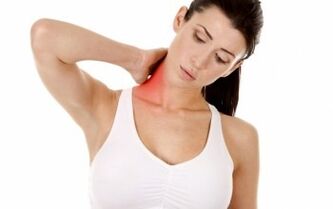
Cervical osteochondrosis, cervicobrachial sciatica, neuralgia of the occipital nerve. Other signs may be a crackling sound when turning, swelling, pain in the neck, in the region of the spine. Inability to turn the neck to the right or left.
character
Drawing, aching, aggravated by periods.
Treatment
Cervical sciatica and neuralgia are treated with painkillers. Magnets, ultrasound, massage with kneading of the neck muscles are prescribed. At home, horseradish poultices, mustard plasters, and honey dressings are good.
You have to be careful because. with a diseased heart, the time of exposure to the mustard patch should be reduced.
It gives to the shoulder blades in the region of the heart
Satellite neuralgia, intervertebral hernia, osteochondrosis, pleurisy, pneumonia, bronchitis. In the latter, the difference is wheezing, shortness of breath, temperature, weakness, lethargy, loss of appetite.
character
Dull with added heaviness and pressure in sternum and behind sternum.
Treatment
Infections of the pulmonary system are stopped with macrolide antibiotics, and bed rest is prescribed.
Damage to the nerve fibers is stabilized by NSAIDs, therapeutic ointments, ultrasound, magnetic, laser physiotherapy, electrophoresis, massage, gymnastics therapy complex.
When should you see a doctor?
If you have incomprehensible pain in the shoulder blades, the reasons are different. Accurate diagnosisonly a doctor can deliver. He decides what to do in a given situation and prescribes competent and effective treatment. The reason for visiting the specialist is acute pain lasting for 3-4 days, fever, numbness of limbs, fainting, rapid deterioration of well-being. The patient must consult a doctor if he vomits and severe spasms develop in the area of the sternum.
Finally, it should be added that the concept of when the back hurts and hurts in the region of the shoulder blades is a broad concept. Because there are so many types.
There is no need for self-medication, it delays the healing process and leads to complications.



































